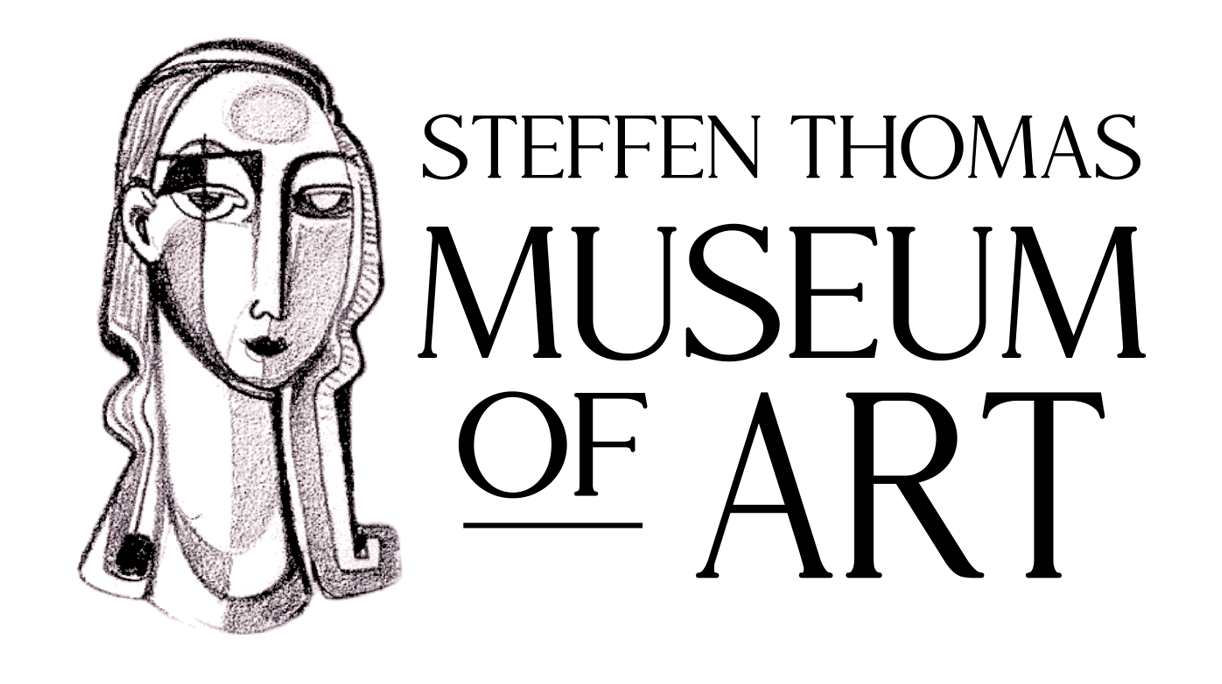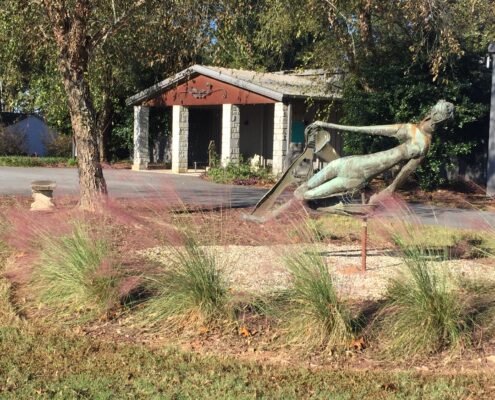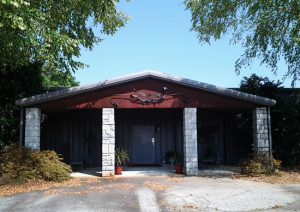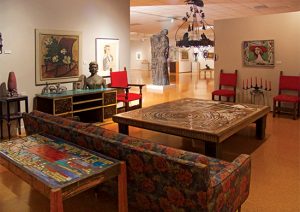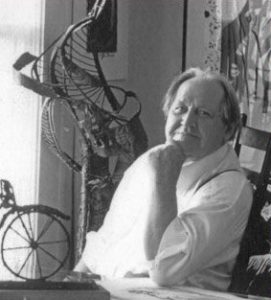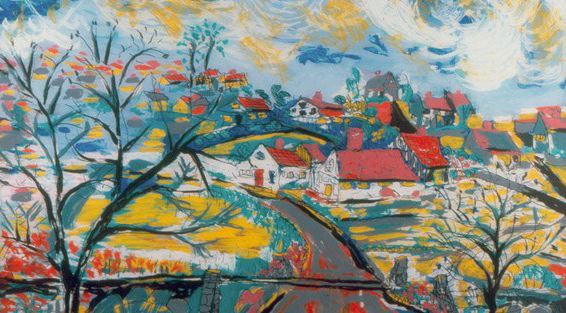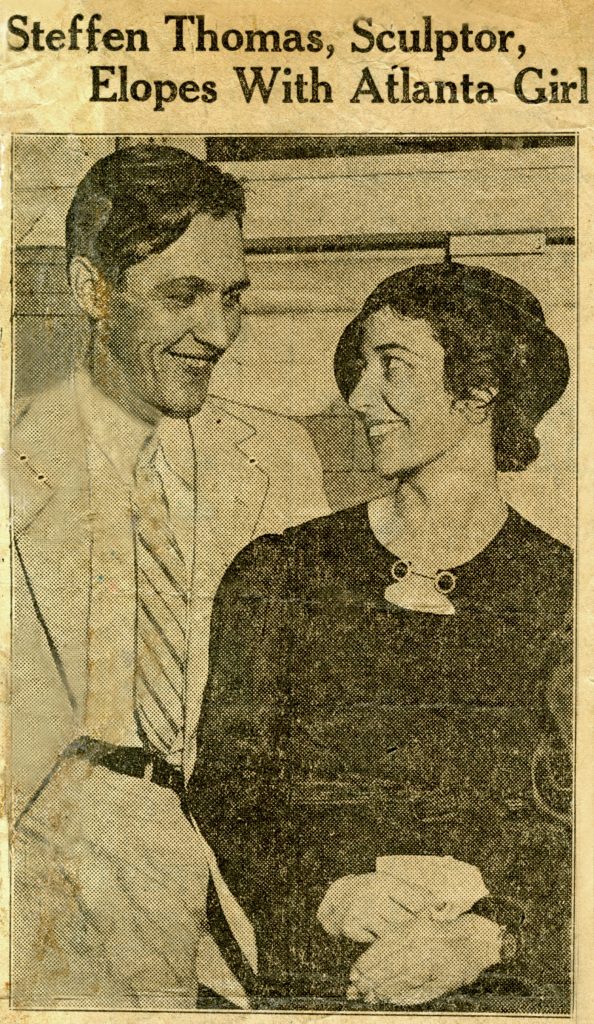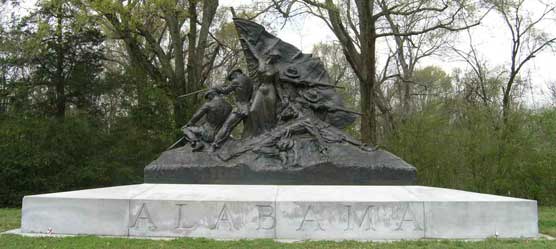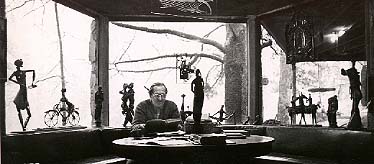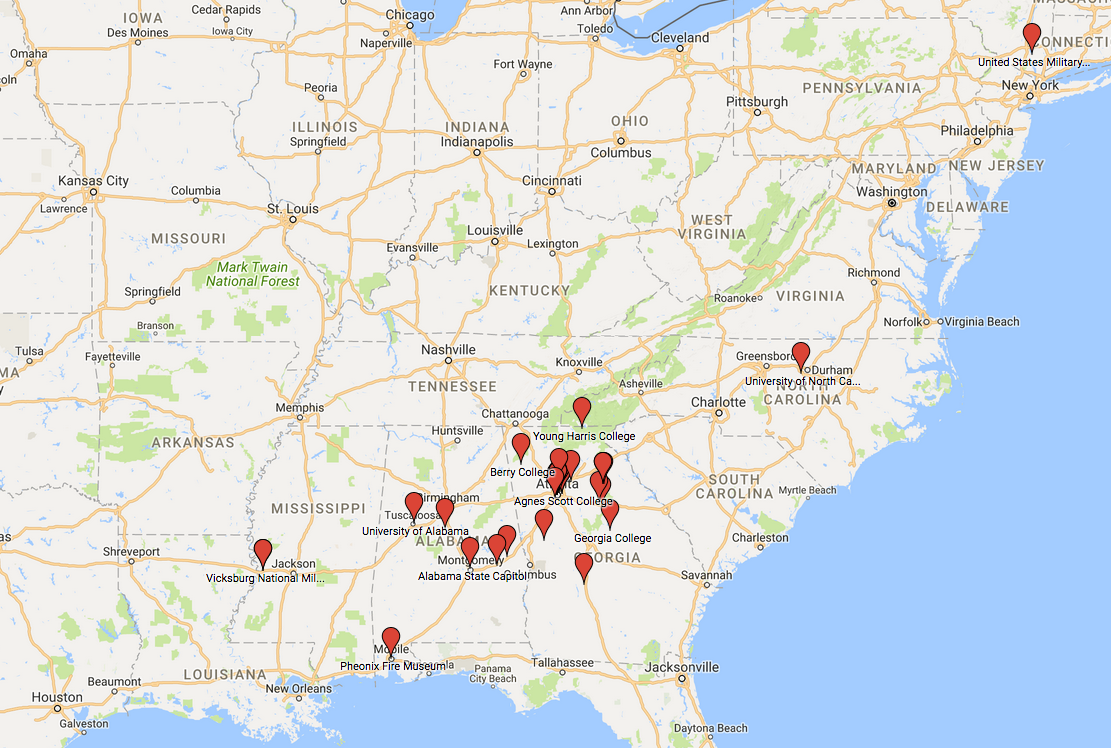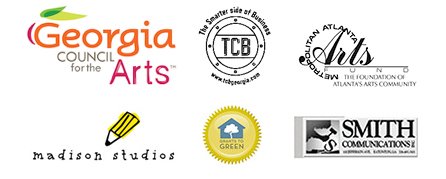About STMA
About the Museum
The Steffen Thomas Museum of Art is a “single artist” museum displaying the art of Steffen Thomas. When Steffen Thomas passed away in 1990, he left his wife, Sara Douglass Thomas, and their four children the summation of a prolific artistic career. Nurturing a vision of a museum dedicated to the preservation of her husband’s art, Mrs. Thomas wanted to turn the Thomas home in Midtown Atlanta into a studio museum. After this was found to be impossible because of zoning and infrastructure issues, the Thomas family decided to build on land owned by the oldest son in rural Morgan County. In 1995, Mrs. Thomas used the bulk of her life savings to build a 13,000 square foot facility to protect and display her late husband’s work, the Steffen Thomas Museum of Art.
To perpetuate Mrs. Thomas’s dream and to preserve and exhibit the art for the education of future generations, a group of family, friends, art enthusiasts and members of the local community created the nonprofit organization of Steffen Thomas Museum and Archives, Inc. (STMA) in 1998, which maintains the facility as a museum and offers educational programs to the community. The corporation owns a Permanent Collection of 400 sculptures, mosaics, paintings, and works on paper by Steffen Thomas. In addition, there are major works on long-term loan from the artist’s family.
The Museum’s Arts Outreach Program was inspired by Steffen Thomas’ experiences with George Washington Carver, Martha Berry and his life-long advocacy of vocational education. The Museum has presented unique, in-depth and hands-on art programming in the Lake Oconee tri-county area every year since 2001. As part of the Arts Outreach Program, public works of art by local school children have been permanently installed in the tri-county communities – a lasting testament to the children’s creativity and the Museum’s dedication to serving the community. In 2015 the museum began a collaboration with regional universities, offering college students the unique opportunity of showing their work in a museum setting.
In addition to the educational programs and changing exhibits of Steffen Thomas’s work, the museum also offers a number of special exhibitions every year.
About The Artist
Steffen Thomas was born in 1906 in Fürth, Germany. His father, a paintbrush manufacturer, apprenticed him to a stonecutter at the age of 14 after realizing his son wanted to be a sculptor. Steffen applied himself and became an excellent stone carver, spending part of his time working on WWI monuments. He was so gifted that at the age of 17 he was accepted to the School of Applied Arts in Nuremberg and at the age of 19 entered the Academy of Fine Arts in Munich. While at the Academy he established himself as a sculptor of note, was given a studio of his own and awarded “Master” status at the age of 21.
Thomas was infatuated with the American Dream, and at the age of 22 paid his own way to America, finding a job in Palm Beach, Florida. There, he made copies of classical sculptures for the E.F. Hutton Estate, until he got bored and started to add his own embellishments. As a result, he was fired on the spot. After a brief trip to Germany, he returned to America. He lived for a short time in Alabama but settled in Atlanta by 1930. The “Young Bavarian Sculptor” soon became well known and was commissioned to sculpt busts of Southern dignitaries, such as Alabama Governor Bibb Graves and Dr. George Denny, President of the University of Alabama. By 1931 he converted an outbuilding into a studio behind the Studio Arts Assembly at the corner of Peachtree and 14 St., where he continued to work for 10 years.
As an attractive, eligible Atlanta bachelor in 1933, Thomas courted the very southern belle Sara Douglass for six short weeks before he asked her to marry him. She promptly said “yes” and they were married that very day in the Fulton County Courthouse, where an Atlanta Journal photographer snapped them as they came out of the building. He became an American citizen in 1935 and continued his work as a sculptor, supporting his new family by creating busts of famous Americans, including the noted scientist George Washington Carver and Dr. Crawford Long.
In 1941 Thomas bought 50 acres in Stone Mountain, Georgia, where he and his wife raised their four children in a home he built himself–stone by stone. Here, he worked in his studio equipped with a bronze-casting foundry he again built himself. Thomas created some of his greatest public sculptures in the Stone Mountain studio, including the colossal size statue of Governor Eugene Talmadge, on the grounds of the Georgia State Capitol in Atlanta, and the Alabama Memorial, located in the Vicksburg National Military Park in Mississippi. Thomas continued to accept commissions until 1955 when he was finally able to follow his muse and create the type of Expressionist art that is represented in the Steffen Thomas Museum of Art.
Sara and Steffen Thomas are pictured on their wedding day. This headline originally ran in the Atlanta Journal and Constitution.
Like a child with a new toy, Thomas was fascinated by every medium, and always wanted to show visitors his latest creation. His energy was unbounded; he let his creativity take him anywhere it wanted to go. At the same time he was a loyal and loving husband and father. He was always seeking the truth and ways to express his vision of the true “brotherhood of man”– a theme reflected in much of his work.
Thomas moved with his wife back to midtown Atlanta in 1973, where he worked at his studio home until his death in 1990. A few years after his death, Thomas’s widow, with the help of family, collectors and friends, established the Steffen Thomas Museum of Art on property in Buckhead, Georgia, near the home of his eldest son, Steffen, Jr. Sara Thomas’s dream to see a museum dedicated to her husband’s life and work was realized in 1997.
In THE ART OF STEFFEN THOMAS, art historian Anthony F. Janson writes:
Thomas idealized women] “…are allied to the classical tradition stretching back to ancient Greece, without being specifically classical in appearance. On the contrary, they have a rounded softness suggestive of Matisse, but with an abstractness that arose from Thomas’s youthful Cubist experiments…In their many guises they express an ideal not simply of femininity but of humanity as a whole.”
Thomas’s work is highly individual. Of course, it has a playful side. Moreover, he was a keen observer of people, witness his portraits, which capture the character of each sitter remarkably well, and of the world, as the watercolors from his 1972 European trip demonstrate. But for the most part it was guided by his inner vision, so that he had little need for the live model.”
Thomas was a relentless worker. Not happy unless he was making something, his vast output and ceaseless experimentation with every available medium are his work’s most characteristic aspects. Nevertheless, tradition played an important part in his work, and as an artist born and trained in Europe in the early twentieth century, many different styles were natural to him.
Janson stated that, “Thomas was a whole-hearted Expressionist, not simply in technique but by temperament. His allegiance was to its underlying approach, which provided a suitable arena for his ample personality. Style was secondary to him. Like technique, it was a means of expression, not an end in itself. For that reason, he was free to change either the style or the technique to suit the requirements of the work at hand…”
There is a consistent artistic personality in Thomas’s work, even though his output is extremely varied. It shows an endless fascination with the possibilities to be explored in different media, a counterpart to his innate curiosity. Given his personality, in fact, he could not have been anything but an Expressionist. It was the perfect vehicle for his impulsive creativity. As with all Expressionists, his work rested on a high level of inspiration, and Thomas believed unequivocally in the rightness of his path.
Click here to explore an interactive map of Steffen Thomas public artworks.
